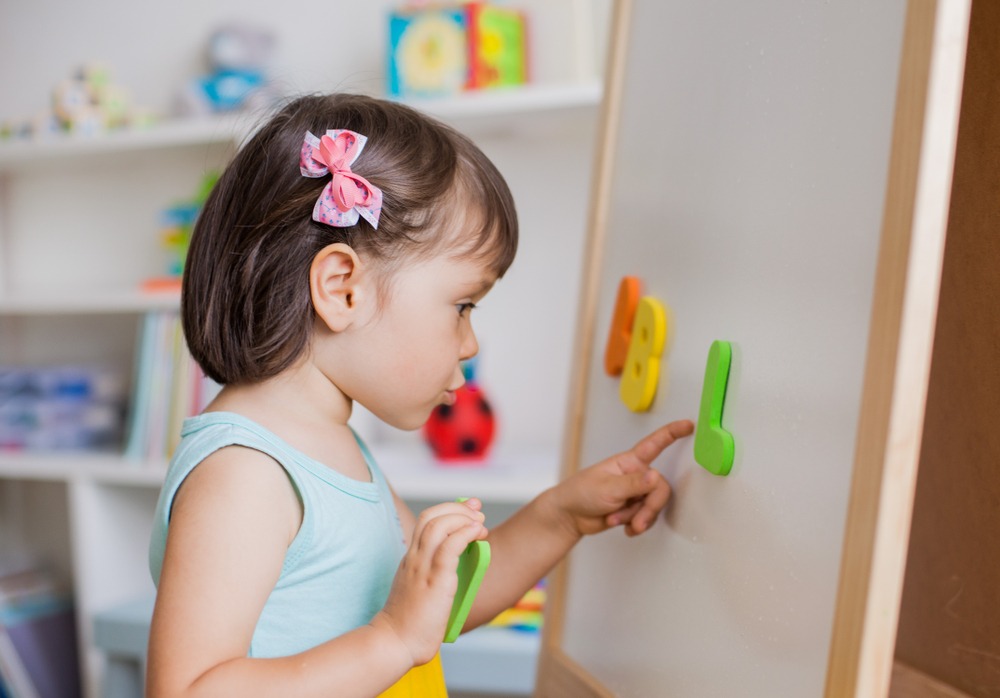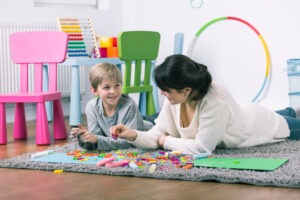Ideas for Promoting Literacy for Children of All Ages
As we head into the third month of the school year, we would like to share simple ideas for promoting literacy with your children. As a speech therapist, I have learned that the best ways to support reading development at home is to use multi-sensory activities. Multi-sensory activities incorporate the five senses (e.g. touch, sight, hearing, smell, and taste), and it’s a highly effective strategy for all students. If you can activate more senses while learning, you will remember more. Here are some of our favorite multi-sensory activities that will help to boost literacy development at home.
Preschool Literacy Support
- Letter hunt: If you have any letter toys (e.g. magnets, puzzles, etc.) you can hide the pieces around the house. As your child finds a letter, encourage him/her to name the letter. If your child knows his/her letter names, try working on letter sounds. For example, “You found A! What sound does A make?” If your child is just starting to make the connection between letters and sounds, it can be helpful to give examples (e.g. “A says /a/, like apple.”). If you have uppercase and lowercase letters, you could incorporate a matching activity as well. For example, hide the uppercase letters and have your child match the uppercase letter to the lowercase letter. If you only have uppercase (or only lowercase), you can write the lowercase letters on post it notes to create a matching game.
- Letter stickers: You can use stickers for another matching activity! These colorful circles from Amazon would be perfect! Here’s what you do: Write one letter on each sticker. Then write the same letters on paper and have your child find the matching sticker. You can even use painter’s tape and create a path with letters to incorporate moving! Check out this activity from Active Littles. She used magnetic letters, but you can easily adapt this activity with letter stickers too! As your child follows the path and comes to a letter, see if he/she can find the matching sticker. Another fun variation for letter stickers is to use food labels. Encourage your child to find a word on a box or bag and then find the corresponding letter sticker.
- Foam letters: We LOVE foam bathtub stickers, and my girls and I recently found awesome bathtub letters and numbers. You can work on identifying letters (e.g. “Find the letter A” or “Find the letter than says /a/”), and then have your child stick it on the wall. Depending on your child’s skills, you could even start to put letters together to make words; a fun idea for promoting literacy! For example, see if your child can find C, A, T. After finding the letters, you can talk about (and show) how these letters make the word cat.
Elementary School Literacy Support
- Sight Word Twister: This is a sure-fire way to get your child up and moving while learning! You can easily adapt this game to work on other skills too, such as rhyming or blending. For more information, check out this blog post from Littlest Bookworms.
- Write letters (or words) in different textures: You can use shaving cream, sand, flour, or even cornmeal. If you need a less messy option, you can even trace in the bubbles during bath time or on sandpaper. You can also designate a box or tray for the writing material. Encourage your child to say the letters and sounds while writing.
- Playdough letters or words: Squeezing, rolling and bending the playdough to form each letter will really tap into some of his/her other senses.
Middle School Literacy Support
- Create your own dictionary: Your child can create his/her own journal using a notebook or even sheets of loose-leaf paper (and create a booklet). As your child reads, have him/her write down unfamiliar or new words. Then, he/she can write the meaning of the word and use the word in a sentence (this will ensure that your child understands the word). If your child enjoys drawing, you could also have him/her include a sketch. If your child prefers acting, have him/her act out the word and see if you can guess!
- Comprehension Cubes and Beach Balls: Conversations in Literacy. We love how this activity is tied to common core standards for promoting literacy development. Bonus, it’s easy, fun and it gets your child moving while promoting literacy development!
- Reading Recipes: We love cooking and baking for so many reasons! Find simple recipes online and have your child read the steps out loud. Have your child find the ingredients by reading the labels in your cabinets or pantry. Your child will love to eat the final product!
If your child is struggling at home or if you simply want to do more at home to support your child’s e-learning, here are some helpful tips for parents:
- Ask your child’s teacher for a list of appropriate books for your child. There are so many books to choose from, which can make buying new books overwhelming. If you are able to get a list from your child’s teacher, you can narrow down the search and set your child up for success!
- Ask your child’s teacher to start an “at-home reading challenge.” This will help increase your child’s motivation to read at home. If a reading chart is not included, you can create your own or find one online to print. The more interactive the challenge is, the more exciting it will be!
- If your child is struggling to read content on the computer, ask your child’s teacher if hard copies can be provided. I often find myself printing reports or articles to read on paper as it’s easier for me to follow along, and I can take notes/highlight while I read. This helps with recall and a variety of other reading comprehension strategies. These are strategies that I learned as a student, and continue to utilize them as an adult!
Conferences are around the corner! This is a great opportunity to check in on your child’s reading and writing abilities at school. If your child’s teacher does express concerns, please do not hesitate to contact us. We are here to support your child’s reading and writing development. We hope these were helpful ideas for promoting literacy at home! Please don’t hesitate to reach out if we can be helpful.









